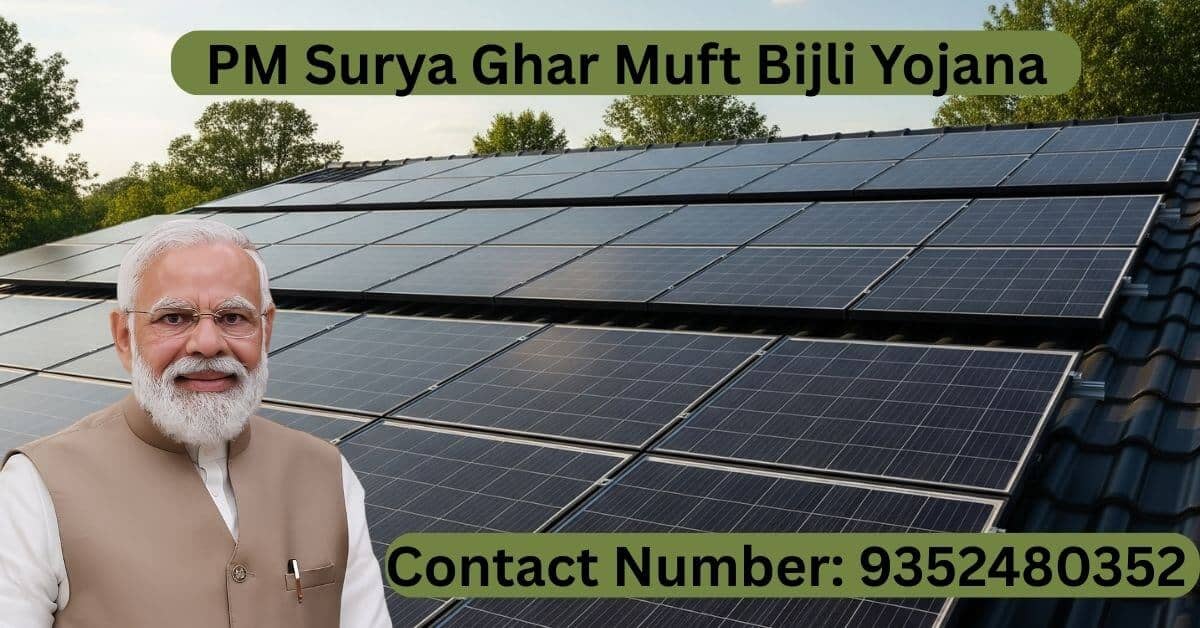Rajasthan enjoys abundant sunlight, making it a prime candidate for rooftop solar adoption. As of 2025, the state is offering compelling incentives, combining central subsidy under the PM Surya Ghar Muft Bijli Yojana and state-level support, making solar rooftop systems more affordable than ever.
Here’s a complete guide to help you navigate the application process, documentation, and get your subsidy credited seamlessly.
In this guide, we’ll walk through:
- Types of subsidies and eligibility,
- Step-by-step application process,
- Documentation required,
- Post-installation steps,
- Common problems and how to avoid delays.
Let’s get started!
1. What Is the PM Surya Ghar Muft Bijli Yojana?
Launched in February 2024, the PM Surya Ghar Muft Bijli Yojana is a national scheme aimed at empowering domestic households to generate solar power and receive fixed monthly electricity benefits.
Subsidy Details:
- To know how to avail a subsidy, please make a call at 9352480352, 7891866396.
State-Level Support:
Rajasthan adds a ₹78,000 subsidy for households already benefiting from the Mukhyamantri Nishulk Bijli Yojana, boosting the total possible subsidy to ₹78,000 for qualifying applicants.
Contact Us for More Information: 9352480352.
2. Eligibility Criteria
You can apply if:
- You are an Indian citizen, over 18 years old, and own a residential property with a suitable rooftop.
- You have an active and valid electricity connection with a local DISCOM.
- You’ve not availed any other solar subsidy earlier.
3. Step-by-Step Application Process
- Register on the PM Surya Ghar Portal
- Visit:
pmsuryaghar.gov.in - Select Rajasthan and your local DISCOM (e.g., JVVNL, AVVNL, JDVVNL).
- Enter consumer number, mobile number, and email to login via OTP.
- Visit:
- Submit Basic Details
- Choose the capacity (1–10 kW).
- Provide bank details and upload a cancelled cheque.
- Choose an Empanelled Vendor
- Only approved vendors listed on the portal can install the panels.
- Installation & Net Metering
- Vendor installs the rooftop solar system along with the net meter.
- Technical feasibility is checked, followed by physical inspection by DISCOM.
- Commissioning and Inspection
- Post-installation, DISCOM issues a Commissioning Certificate after verifying setup.
- Subsidy Disbursement
- Submit bank details on the portal.
- The subsidy is typically credited within 30 days of successful commissioning.
4. Required Documents
Prepare these ahead of time:
- Identity proof: Aadhaar card, Voter ID, PAN.
- Proof of residence: Recent electricity bill, property tax receipt.
- Installation invoice/agreement.
- Net metering application copy and installation photos.
- Bank account details along with a cancelled cheque.
5. Subsidy Examples & Cost Savings
| System Size | Central Subsidy |
|---|---|
| 3 kW and above | ₹78,000 |
For example, a 3 kW system with benchmark cost ₹1,90,000 can be reduced to ₹78,000 with maximum subsidy.
You may also earn through net metering if the DISCOM allows excess generation credit to your electricity bill.
6. Common Challenges & Tips
Avoid These Pitfalls
- Ensure your DISCOM file is approved before starting installation.
- Track application status regularly on the portal.
Applying for solar subsidy in Rajasthan is now simpler than before—if you follow correct steps. From registering on the official portal, selecting a trusted, empanelled vendor, submitting complete documentation, to commissioning and subsidy disbursement—this guide covers it all.
Ready to take the solar leap? Start your application today on the PM Surya Ghar portal, schedule your installation, and harness the dual benefits of central and state subsidies. Your rooftop can now help generate clean energy and smart savings.
Contact Us for More Information: 9352480352.
8. FAQs
Q1. What’s the maximum subsidy I can get on a 3 kW rooftop system?
– Up to ₹78,000 from central government. If eligible under the Nishulk Bijli scheme, you could get an additional ₹17,000, totaling ₹95,000.
Q2. How long before I receive the subsidy?
– Typically within 30 days after DISCOM approval and installation, although delays occur in some cases.
Q3. Can I install above 10 kW?
– You may install higher capacity, but subsidies apply only up to 10 kW (40% for first 3 kW, 20% thereafter).

